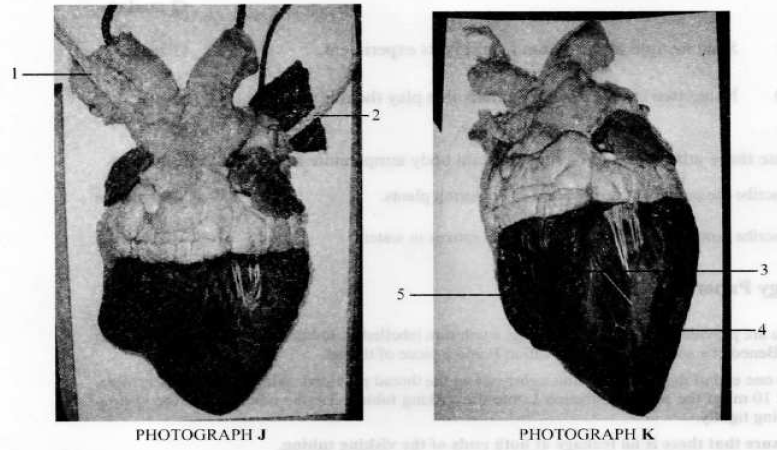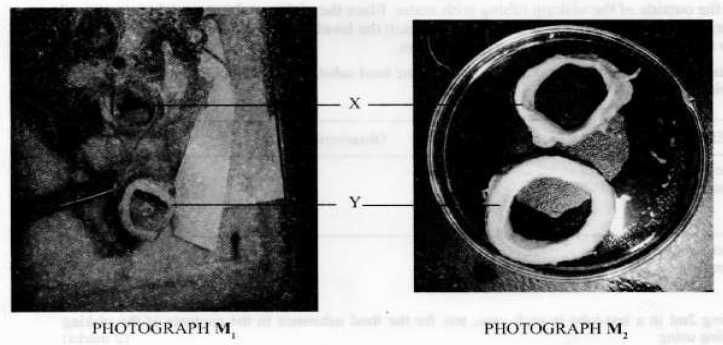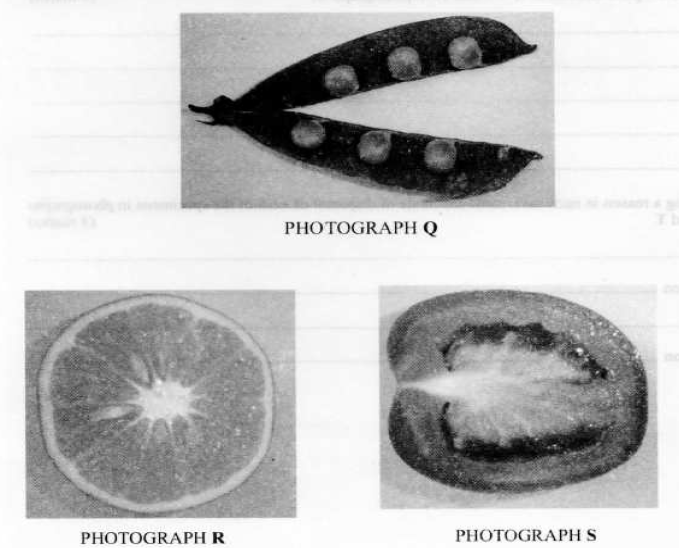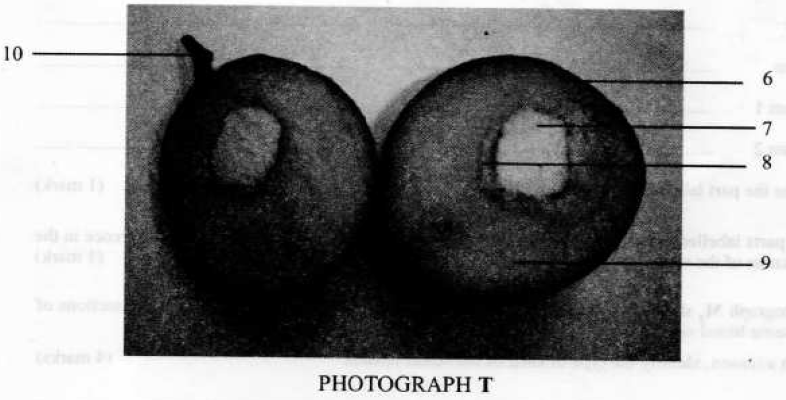- You are provided with a visking tubing, a solution labeled L, Iodine solution labeled E, Benedict’s solution labeled F and a piece of thread.
Tie one end of the visking tubing tightly using the thread provided. With the help of a syringe, put 10 ml of the solution labeled L into the visking tubing. Tie the other end of the visking tubing tightly.
Ensure that there is no leakage at both ends of the visking tubing.
Wash the outside of the visking tubing with water. Place the visking tubing upright in a 100 ml beaker. Add distilled water into the beaker to reach the level of the liquid in the visking tubing. Allow the set up to stand for 30 minutes or more.- Using 2ml in a test tube in each case, test for the food substance in the liquid outside the visking tubing. (6 marks)
- Using 2ml test tube in each case, test for the food substance in the contents of the visking tubing using. (2 marks)
- Account for your results in (a) and (b) above. (3 marks)
- Using 2ml in a test tube in each case, test for the food substance in the liquid outside the visking tubing. (6 marks)
- The photographs labeled J, K , M1 and M2 are sections of mammalian heart. Examine them.
- The blue, green and the cream strings go through various blood vessels and end up in various chambers of the heart. For each string, name the chamber where the string ends and the blood vessel through which the string goes. (8 marks)
- Name the part labeled 3 in photograph K. (1 mark)
- The parts labeled 4 and 5 are walls of two chambers of the heart. Account for the difference in the thickness of the walls. (1 mark)
- Photograph M1 shows two blood vessels labeled X and Y while M2 shows transverse section of the same blood vessels.
With a reason, identify the type of each of the blood vessels. (4 marks) - In the photograph K, indicate by letter B the part of the heart which would be cut to expose the bicuspid valve. (1 mark)
- The blue, green and the cream strings go through various blood vessels and end up in various chambers of the heart. For each string, name the chamber where the string ends and the blood vessel through which the string goes. (8 marks)
- The photographs labeled Q, R, S and T are sections of some parts of plants.
- Name the type of placentation in the speciments shown in the photographs Q, R, and S
- Label a seed in photographs R and S.
- Name the parts labelled 6,7,8,9, and 10 in photograph T.
- Giving a reason in each case, name the mode of dispersal of each of the speciments in the photographs Q and T.
- Name the type of placentation in the speciments shown in the photographs Q, R, and S
Join our whatsapp group for latest updates
Tap Here to Download for 50/-
Get on WhatsApp for 50/-
Download KCSE 2010 Biology Paper 3 Questions with Marking Scheme.
Tap Here to Download for 50/-
Get on WhatsApp for 50/-
Why download?
- ✔ To read offline at any time.
- ✔ To Print at your convenience
- ✔ Share Easily with Friends / Students






